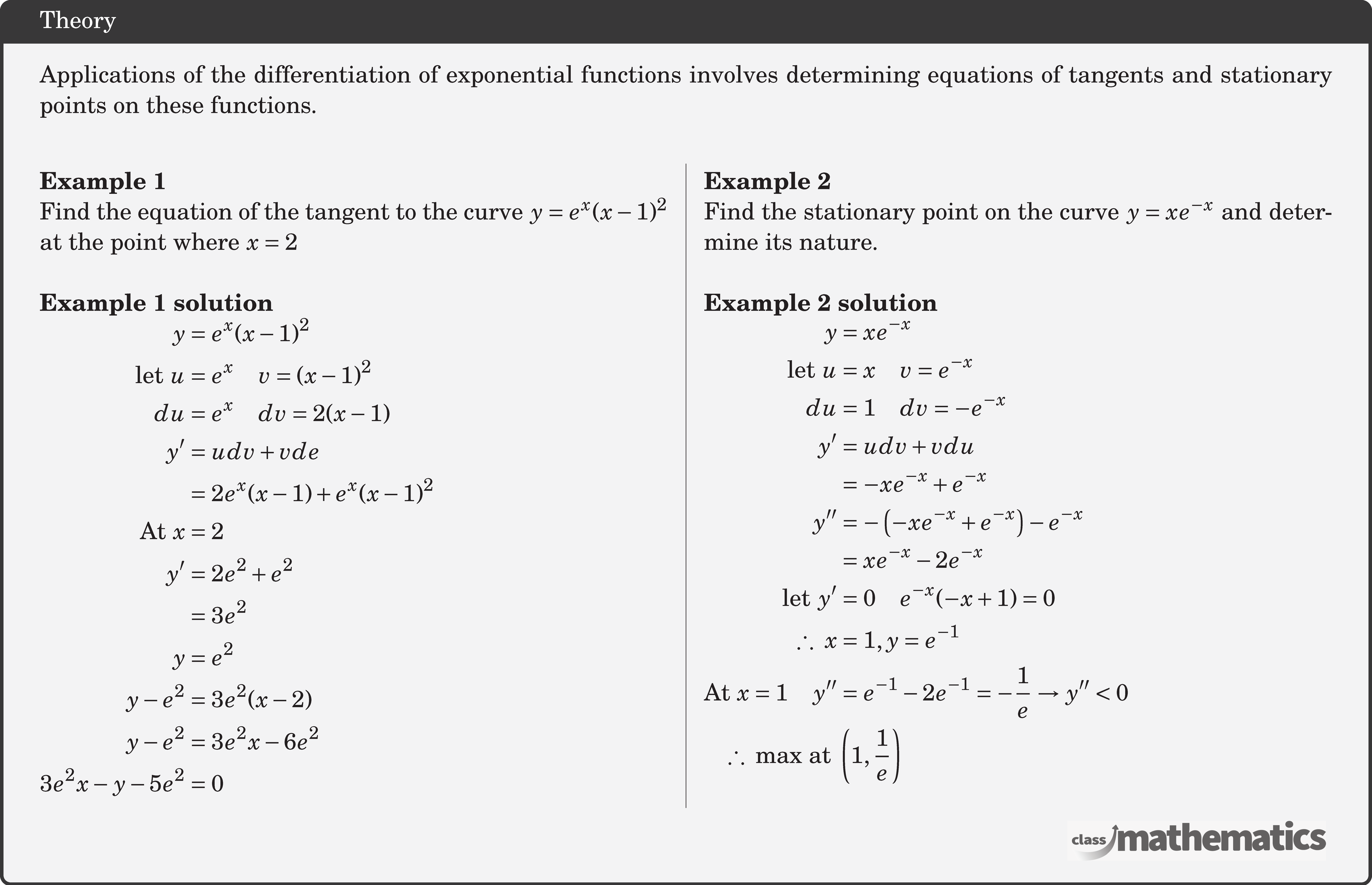Resources for Applications of Differentiation e^x
-
Questions
15
With Worked SolutionClick Here -
Video Tutorials
1
Click Here
Applications of Differentiation e^x Theory

